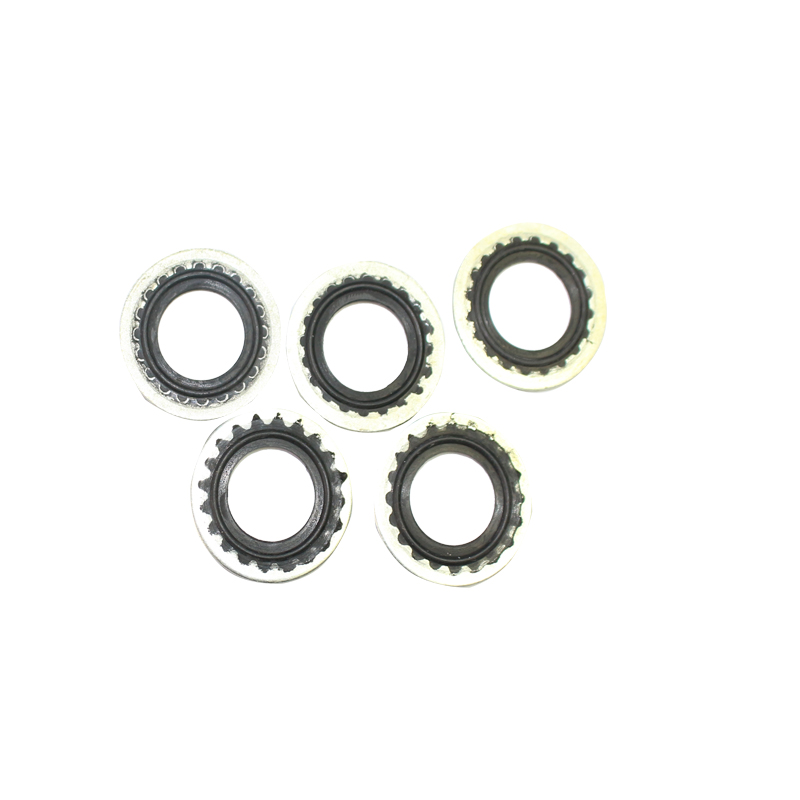rear drive shaft seal
Understanding Rear Drive Shaft Seal Importance and Maintenance
The rear drive shaft seal is a crucial component in the drivetrain of many vehicles, particularly those with rear-wheel drive or all-wheel drive configurations. This seal plays an essential role in maintaining the integrity of the drivetrain system and ensuring smooth operation of the vehicle.
What is a Rear Drive Shaft Seal?
The rear drive shaft seal is a circular rubber or synthetic ring designed to prevent fluid leaks from the rear differential or transfer case. Its primary function is to maintain lubrication within the drivetrain system while keeping contaminants, dirt, and debris out. The effectiveness of this seal is vital as it helps prolong the life of components like the drive shaft, differential gears, and bearings.
Importance of the Rear Drive Shaft Seal
The rear drive shaft operates by transferring power from the transmission to the rear wheels. It rotates at high speeds, and any failure in the seal can lead to a loss of essential lubricants. If the lubrication is compromised, parts within the rear differential or transfer case can experience severe wear and tear, potentially leading to catastrophic failure. This can not only affect vehicle performance but can also result in expensive repairs.
Additionally, fluid leaks caused by a malfunctioning seal can create unsafe driving conditions. A significant loss of lubricant can lead to overheating and subsequent failure of the drivetrain components. Therefore, keeping the rear drive shaft seal in good condition is vital for the overall health of the vehicle.
Signs of Wear or Failure
rear drive shaft seal

Vehicle owners should be vigilant about the condition of the rear drive shaft seal. Common signs of wear or failure include
1. Fluid Leaks If you notice fluid pooling under the vehicle, especially a viscous substance, it may indicate a leak from the rear drive shaft seal. 2. Unusual Noises Grinding or whining noises coming from the rear of the vehicle can signal that the differential is not properly lubricated due to a failing seal. 3. Vibration Excessive vibration during acceleration may suggest that the drive shaft is not operating smoothly, potentially due to a worn-out seal.
4. Warning Lights On modern vehicles, dashboard warning lights may indicate issues related to the drivetrain, including possible leaks.
Maintenance and Replacement
Regular maintenance is key to ensuring the longevity of the rear drive shaft seal, alongside the entire drivetrain. It is advisable to have the drivetrain inspected periodically, especially during routine oil changes or service checks. Replacing a worn or damaged seal can often be a straightforward process, but it is crucial to use high-quality replacement parts that meet or exceed manufacturer specifications.
Conclusion
In summary, the rear drive shaft seal plays a vital role in the efficient functioning of a vehicle’s drivetrain. It prevents leaks, ensures proper lubrication, and safeguards against dirt and debris. Recognizing the signs of wear and maintaining the seal can help avoid costly repairs and enhance overall vehicle performance. Regular inspections and timely replacement are essential procedures every vehicle owner should prioritize for a safe and smooth driving experience.
-
Simplifying Oil Changes: A Comprehensive Guide to Oil Drain Plugs and Their Variants
News Aug.04,2025
-
Mastering Oil Drain Maintenance: Solutions for Stripped, Worn, and Upgraded Oil Plugs
News Aug.04,2025
-
Fixing Oil Pan Plug Issues: Leaks, Stripped Nuts, and the Right Replacement Solutions
News Aug.04,2025
-
Everything You Need to Know About Oil Drain Plugs: Sizes, Fixes, and Upgrades
News Aug.04,2025
-
Choosing the Right Oil Drain Plug: A Guide to Sizes, Materials, and Drain Innovations
News Aug.04,2025
-
A Complete Guide to Automotive Drain Plugs: Types, Problems, and Innovative Solutions
News Aug.04,2025
-
The Ultimate Guide to Car Repair Kits: Tools and Essentials Every Driver Should Own
News Aug.01,2025
Products categories















